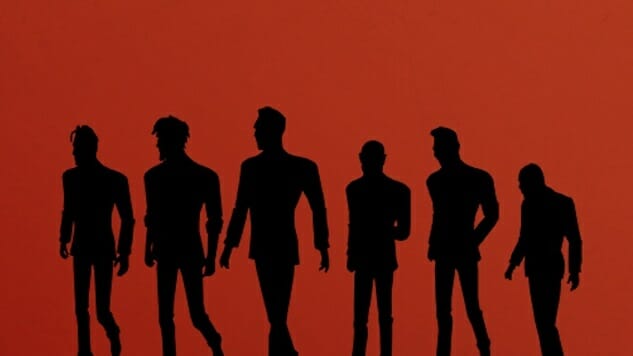
Everyone is confused about why Reservoir Dogs: Bloody Days has the branding that it does. Quentin Tarantino’s 1992 film broke him into the spotlight with its quick dialogue, unexpected soundtrack, and blending of different cinematic styles. Whether you like it or hate it, think it aged well or would rather it be left in the dust, that movie opened up American moviegoers to a particular kind of new (or at least recombined) thing. Bloody Days doesn’t just have a pair of shoes to fill. It has two different shoes, one too big and the other too small, and it has to walk a mile in both. It’s an impossible job. The game doesn’t live up to any expectations.
I’m not sure that I think elaborating the mechanical reasons why the game doesn’t work does any good. Instead, I would rather engage with a different question: What makes translating Reservoir Dogs, or any film, to a videogame so difficult? What makes the very attempt of Bloody Days a mistake to begin with?
In another piece about how videogame adaptations work, I posited that there are two kinds of adaptations from film to game: subjective ones that put you in the role of a specific character (say, Aragorn) and play out the narrative from that limited perspective, and affective ones that simply attempt to transfer a set of feelings, set pieces and connections from a film into a game. The specifics of these things don’t matter much here, but the important thing to note is that Bloody Days doesn’t manage either of them.
Games that use the trappings of movies are hyper-reliant on their players giving a damn. Mafia III uses a tried-and-true documentary format to frame the open-world missions that the player embarks on (a form of affective adaptation), and that works because we understand what that framework is. If you’ve seen a documentary about a historical subject, you understand the movement of stuff that happened and then interviews about that stuff.
In a similar mode, a classic like Spider-Man 2 works within a framework that is just as simple, but from the subjective side. It plops you down in the boots of the friendly neighborhood bug eater. You do things that he did in the movie that this game is supposedly adapting, but then you do all sorts of other things that Spider-Man might have done in-between. You deliver pizzas, and you beat up criminals, and you spend time swinging around this open world that is clearly in conversation with the film without trying to be it.
Bloody Days doesn’t manage any of that. While the game sort of looks like a Hotline Miami-inspired game in pictures, the reality is much stranger. It is a puzzle game. You control each of your team members during a specific time period, and you rewind time to make sure that all of them are acting in concert. So you’re playing a micro game of Hotline Miami, and then you’re playing another one, and another one, until you have killed all the enemies. It is immediately tedious. As Kotaku’s Gita Jackson wrote in her review, “Rewinding time becomes just another dumb thing you need to deal with in a mostly uninteresting game.” Julia Alexander at Polygon called it a “tedious experience.” It is not an enjoyable game to play.
There are lots and lots of games that are popular but fundamentally not enjoyable to play. Basically every major popular game played on cell phones are, mechanically, shallow and uncomplicated. And yet we play them, and I play them, because the presentation is so good. It isn’t about matching three or placing my little tower defense dudes in the right place. It’s about the sparkle, the sound effect, and the shape. Weirdly, Clash of Clans does a better job of keeping me emotionally engaged than Bloody Days does, and that has everything to do with how the latter fails to use its cinematic adaptation.
Without people cracking wise, the loud bang of guns, or weird jokes that don’t go anywhere, it’s hard to see this as having anything to do with Reservoir Dogs, and in a weird twist, I think that could have saved it. If this game were mechanically exactly the same time rewinding shooting mishmash but chock-full of quotable lines and fueled with new, similar lines, I could see myself getting engaged with it. If it used the affective properties of the film and really tried to bring me in, I could get tricked into really caring. Worse, I want to get tricked into caring. Let me sit around diners doing visual novel content with someone who might at least sound like Harvey Keitel. Then I’d be engaged.
Bloody Days wants you to remember a film, but then it doesn’t do any work to bring the film ideas to you or place you inside of those ideas. In the subjective and affective worlds, it cannot succeed in getting me engaged with the game. Without either of those qualities, a game is destined to be compared rather than embraced. And, frankly, being compared to a cinematic classic is never where a game wants to be.
Cameron Kunzelman tweets at @ckunzelman and writes about games at thiscageisworms.com. His latest game, Epanalepsis, was released last year. It’s available on Steam.